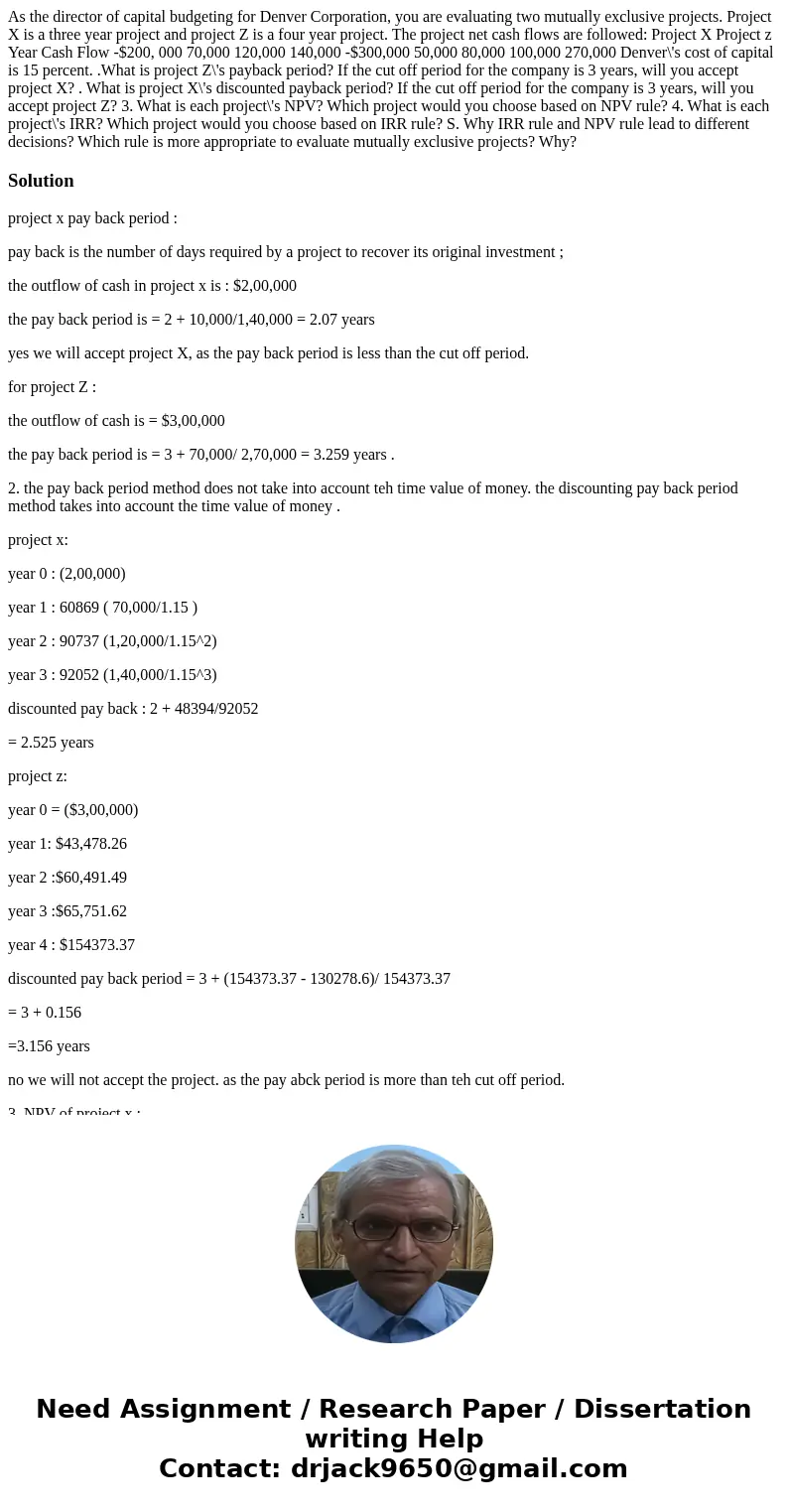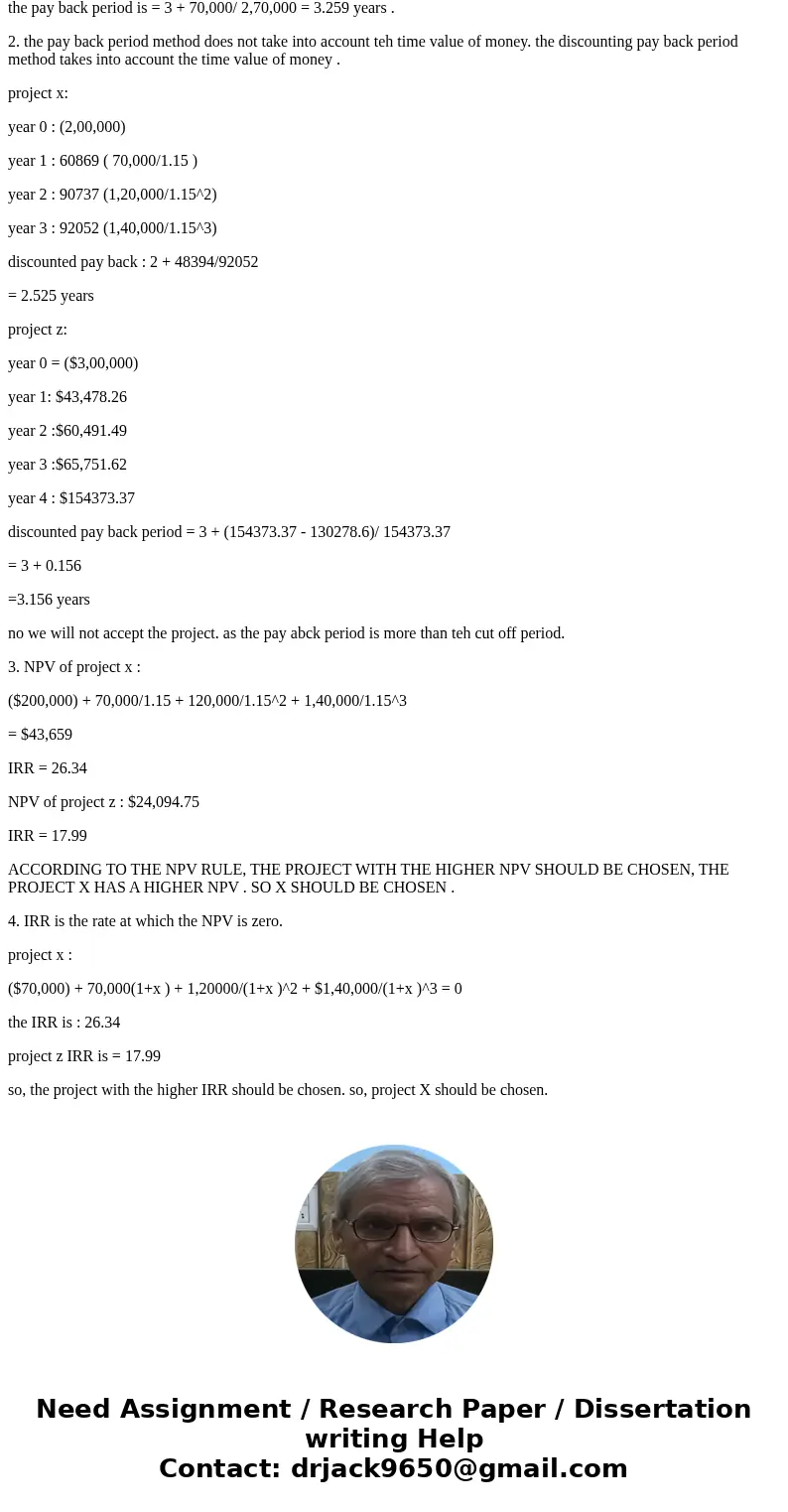As the director of capital budgeting for Denver Corporation
Solution
project x pay back period :
pay back is the number of days required by a project to recover its original investment ;
the outflow of cash in project x is : $2,00,000
the pay back period is = 2 + 10,000/1,40,000 = 2.07 years
yes we will accept project X, as the pay back period is less than the cut off period.
for project Z :
the outflow of cash is = $3,00,000
the pay back period is = 3 + 70,000/ 2,70,000 = 3.259 years .
2. the pay back period method does not take into account teh time value of money. the discounting pay back period method takes into account the time value of money .
project x:
year 0 : (2,00,000)
year 1 : 60869 ( 70,000/1.15 )
year 2 : 90737 (1,20,000/1.15^2)
year 3 : 92052 (1,40,000/1.15^3)
discounted pay back : 2 + 48394/92052
= 2.525 years
project z:
year 0 = ($3,00,000)
year 1: $43,478.26
year 2 :$60,491.49
year 3 :$65,751.62
year 4 : $154373.37
discounted pay back period = 3 + (154373.37 - 130278.6)/ 154373.37
= 3 + 0.156
=3.156 years
no we will not accept the project. as the pay abck period is more than teh cut off period.
3. NPV of project x :
($200,000) + 70,000/1.15 + 120,000/1.15^2 + 1,40,000/1.15^3
= $43,659
IRR = 26.34
NPV of project z : $24,094.75
IRR = 17.99
ACCORDING TO THE NPV RULE, THE PROJECT WITH THE HIGHER NPV SHOULD BE CHOSEN, THE PROJECT X HAS A HIGHER NPV . SO X SHOULD BE CHOSEN .
4. IRR is the rate at which the NPV is zero.
project x :
($70,000) + 70,000(1+x ) + 1,20000/(1+x )^2 + $1,40,000/(1+x )^3 = 0
the IRR is : 26.34
project z IRR is = 17.99
so, the project with the higher IRR should be chosen. so, project X should be chosen.


 Homework Sourse
Homework Sourse